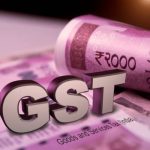The sugar industry’s prominent experts and analysts are yet to decide the numbers of world sugar consumption after the unprecedented Covid-19 pandemic, whether the market will face a surplus or deficit. The numbers predominantly lie on how much the pandemic will have slash consumption or prompt top producer Brazil to make more lucrative sugar at the expense of cheaper ethanol.
Speaking on the Indian side, Mr. Somnath Chatterjee – Head Procurement & Logistics for a leading FMCG company shared his views. He said, “Crisis brings opportunities. This could not have been truer for Foods FMCG industry in 2020 even as the world grappled with the impact of the Covid-19 pandemic. The sector is learning, innovating and rising from disruptions to put the worst behind and looking forward to the New Year with optimism and a new-found confidence. With food, personal care items, the hero products of the pandemic – managing to push the industry to post positive growth amid the crisis, in 2021, the FMCG industry is looking forward to carry on with the momentum and sustained revival across categories in rural and urban markets of India.
With lessons learnt on how to navigate through the hurdles and uncertainties thrown up by the once-in-a-lifetime occurrence, the sector is more confident going into 2021, having fast tracked adoption of digital medium for distribution and realigned product portfolio, such as fortified food product items especially tailored for the new normal.
Branded Indian candy, gums, juices and chocolate categories with a market size of approximately ₹7500 crores, ₹1500 crores, ₹1200 crores and ₹11,000 crores respectively got impacted initially due to demand destruction during Covid-19 but are expected to recover fast with a V shape growth curve. Sugar consumption in India can be categorized in three segments viz. household, industrial and small businesses. Industrial and small business consumption can also be called out-of-home consumption, which constitutes about 65% of total sugar consumption in India.
Small business consumption includes tea shops, roadside shops, office canteens, restaurants, caterers and sweetmeat. This demand had taken a massive hit for 2-3 months during initial lockdowns. However with the beginning of “unlock”, demand from most of the categories including biscuits, confectionery and beverages had gone up significantly and now with roll out of vaccines, it has reached to its normal levels again. There has been a clear shift in people’s preferences for eating habits towards packaged food items. Whatever is packaged or processed ends up having some sugar content, these include ketchup, beverages, ready to eat items, snacks etc. So this indirect consumption of sugar will give a boost to the overall sugar consumption in India. Sugar demand has recovered from the destruction seen during the lockdown and has returned to pre-Covid levels on a sharp increase in orders from most of the foods FMCG categories to fill their inventory and meet daily needs.
Overall we see demand to grow up in the coming months and India is expected to regain its domestic sugar demand numbers back to 26 MMT during the current sugar year. On the export front, India will continue filling in the World’s sugar deficit with 5-5.5 MMT export numbers during 2020-21 sugar year supported well by export subsidies by the Government of India.
Speaking on the Global scenario, Mr. Paul Steed – Sr. Global Price Risk Lead, Sugar at Mars Wrigley – World’s leading manufacturer of chocolate, chewing gum, mints and fruity confections shared, “The USD225 billion global confectionery market includes a wide range of products such as chocolates, cookies, bars, gummies, mints, and others. The top 10 companies account for 40% of global confectionery sales. Almost half of global confectionery sales are in the economy/mass consumption segment and roughly 40% of global confections are sold through super/hypermarkets. Chocolate accounts for the highest confectionery market share (35%). The COVID lock-down in March – April 2020 impacted raw material supply and logistics. Some factories were initially shuttered.”
“COVID also created a tremendous amount of uncertainty in consumer demand. While sales initially plummeted during the second quarter of 2020, they recovered quickly starting in the third quarter as companies and consumers demonstrated a tremendous amount of agility and resilience adapting to new supply chains and consumption patterns. While some categories like gum have suffered more than others, publicly reported financial information indicates the global confection category probably avoided decline in 2020 (but did not grow at a forecast 3.5%). The virtual halt in global tourism impacted consumption in some regions (notably Europe) but presumably people bought some confections even as they stayed in their home countries. In response to COVID’s recessionary impact, many countries adopted aggressive monetary and fiscal programs and in some cases this included direct payments to individuals. In middle and lower income countries direct financial assistance is highly correlated with increased food sales (Brazil is a good example).” He further added.












